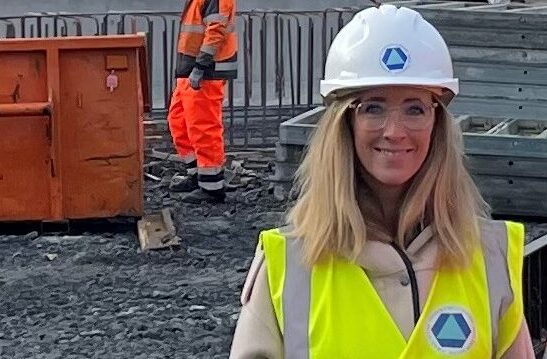It’s encouraging to see investment being made in the kind of transformative projects that can unlock economic potential, improve connectivity, and support sustainable population growth across our cities and counties.
Take Waterford’s North Quays project as a prime example. This is one of the most ambitious urban regeneration initiatives in the country and certainly the largest of its kind in the south east.
It has attracted approximately €126million from the Urban Regeneration and Development Fund (URDF) and EU funding, which is substantial, not just in absolute terms, but because of what it represents.
North Quays is one of only 10 projects nationally identified in Ireland 2040 under the National Planning Framework as critical to enabling a regional city of scale.
Beyond the physical transformation, this project has the potential to stimulate follow-on investment in housing, tourism, and hospitality. It’s the kind of domino effect we need more of across regional Ireland.
In Limerick, the approval of the Adare Bypass, part of the larger M20 vision, is expected to be completed by 2027, ahead of international attention bearing down upon the region when Ireland hosts the Ryder Cup at Adare Manor that same year.
The bypass will help alleviate longstanding traffic bottlenecks through Adare village, improve overall connectivity in the region, and is another example of how strategic infrastructure can support both local communities and national-level events.
We’re also a step closer to the reintroduction of freight services on the Limerick to Foynes rail line, with 42km of new track now fully laid.
Then we turn to Cork, which continues to develop as a national counterbalance to Dublin, a leading example of how regional development benefits the whole country.
One of the standout projects here is the proposed light rail system, a one billion euro investment that has recently gone to public consultation.
The line would stretch 18 kilometres from Ballincollig in the west to Mahon Point in the east, connecting major hubs like MTU, CUH, UCC, Kent Station, and the Docklands. While it may still be some time before construction begins, this is exactly the kind of strategic, sustainable investment we need to see more of in our cities.
We are also seeing Cork’s commuter rail network undergoing significant upgrades to improve connectivity across the city and county. The Cork Area Commuter Rail Programme will boost capacity and deliver more frequent, reliable services, while the Glounthaune to Midleton twin-track project is set for completion in 2026.
Plans for new stations at locations including Blackpool, Tivoli, Blarney and Dunkettle are also advancing, with public consultation underway this year.
Also in Cork, the M28 Cork to Ringaskiddy Road Project has received final approval from the government, with a projected cost of approximately €456million.
It includes an 11km motorway and a 1.5km link road that is already under construction as part of the advance works.
Beyond the immediate transport benefits, the M28 is also a vital enabler of foreign direct investment in the region, particularly in the pharmaceutical and medtech sectors clustered around Ringaskiddy.

CIF Director Joanne Treacy on site
These are the kinds of projects that send a strong message about the south’s potential. They support jobs, attract investment, and improve the day-to-day lives of people living and working in the region.
But while we’re right to highlight these successes, we can’t ignore the barriers that remain.
Across the Southern Region, and indeed nationally, one of the most pressing challenges we face is around utilities infrastructure. Water and wastewater systems are under significant strain.
Many treatment plants are operating at or near capacity, which directly impacts housing delivery and broader development. Developers are encountering delays and bureaucratic roadblocks when trying to connect new housing to the existing network, and the knock-on effect is slowing down the supply chain at a time when we can least afford it.
This isn’t a problem unique to the south, but it is a very real issue here. Without urgent investment in upgrading and expanding utility capacity, we risk undermining the progress we’re making elsewhere.
Planning, procurement, and approvals processes all need streamlining if we’re to deliver infrastructure at the scale and speed that’s required. Housing targets simply won’t be met if the basic infrastructure to support them isn’t in place. And it’s not just water and wastewater.
We need to be keeping a close eye on our national power grid. Capacity issues are already beginning to emerge, and we know that further strain is coming as the country moves toward greater electrification, whether that’s in transport, housing, or industry.
Grid connectivity and resilience are going to be absolutely vital if we want to continue attracting FDI and supporting domestic industry growth.
So while the Southern Region has plenty to be proud of right now, we also have a lot of work to do. The progress we’re seeing is the result of years of advocacy, planning, and persistence.
We can’t lose sight of the fact that every delay, every capacity issue, and every missed opportunity has a real impact on the ground, for families waiting on homes, for businesses planning their futures, and for communities hoping to thrive.
But we’re heading in the right direction, and with continued focus, we can ensure the south plays its full part in building Ireland’s future.









